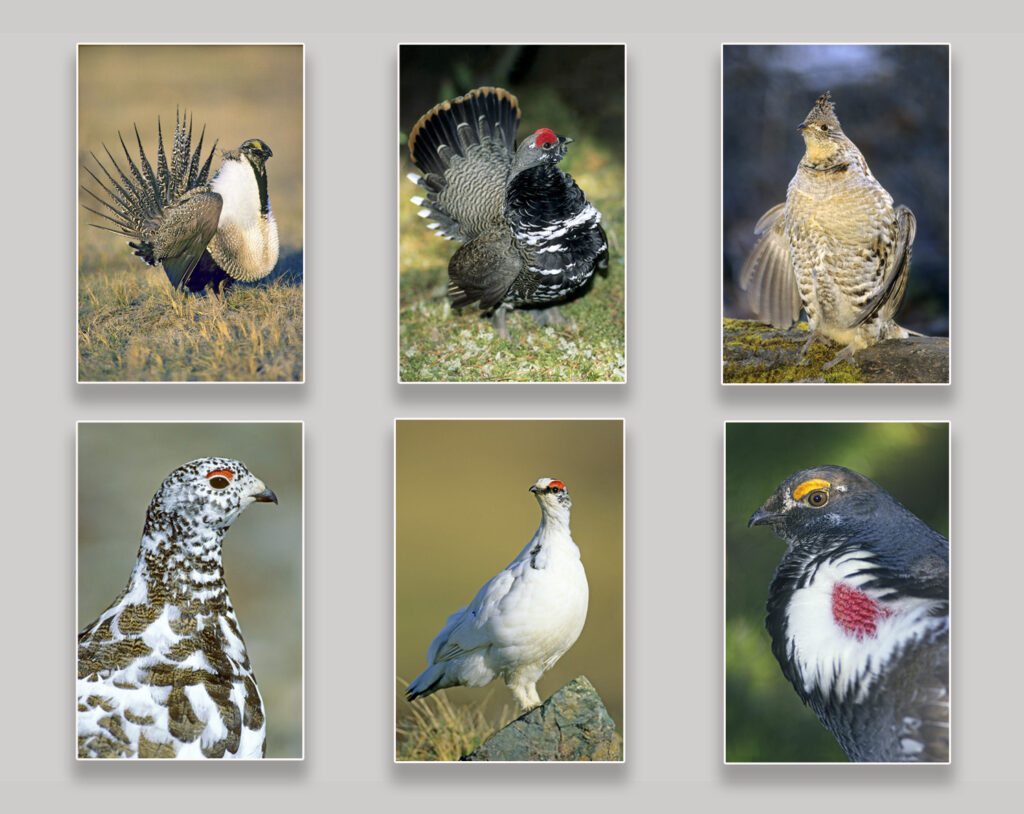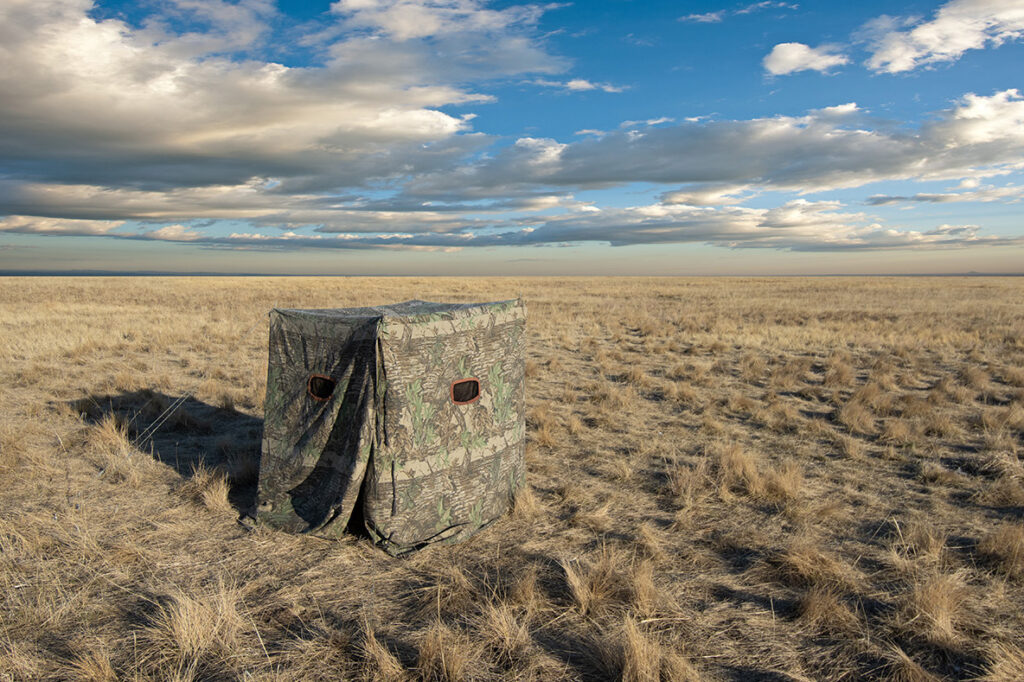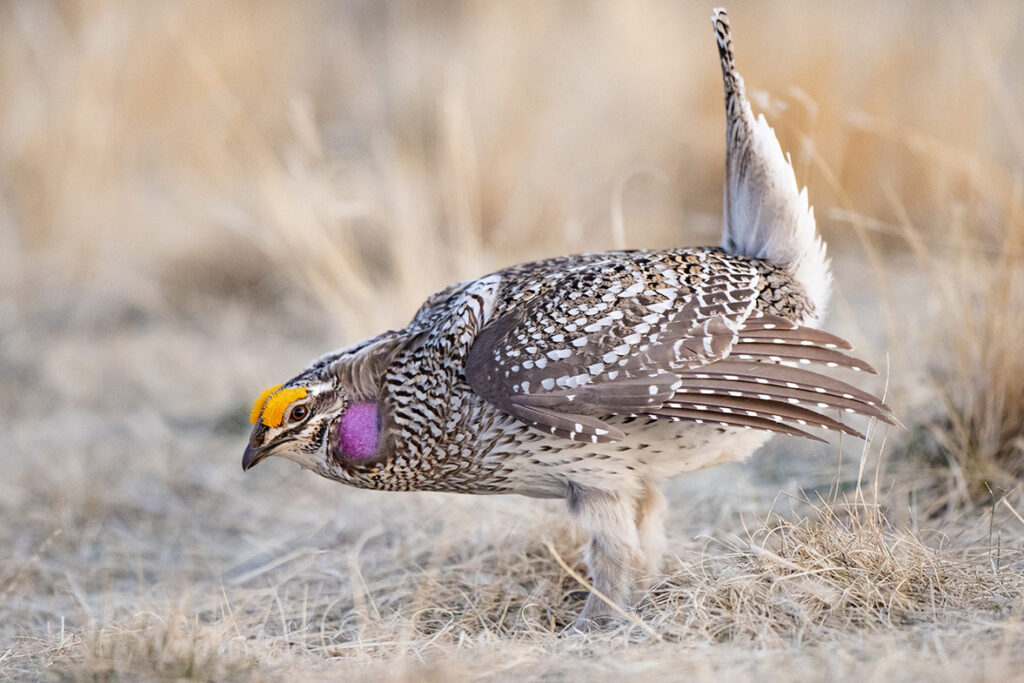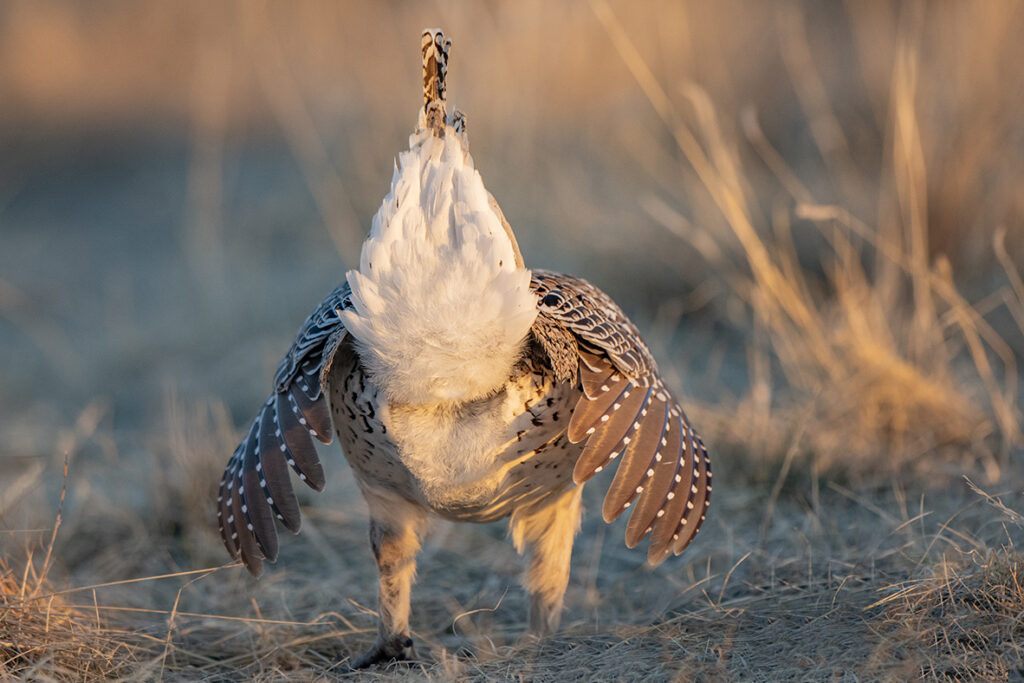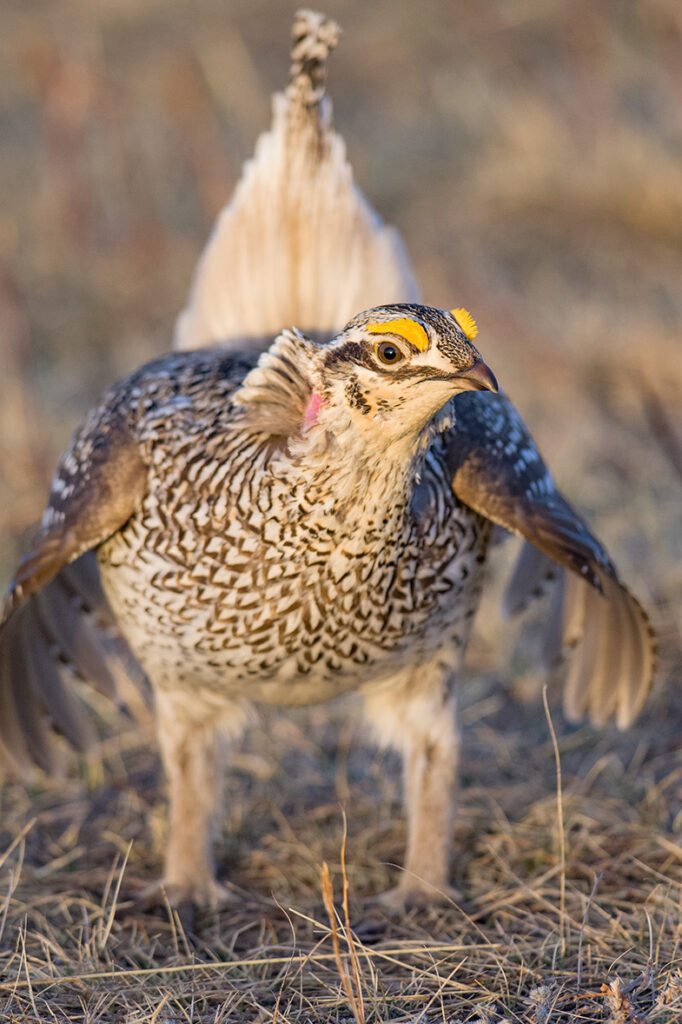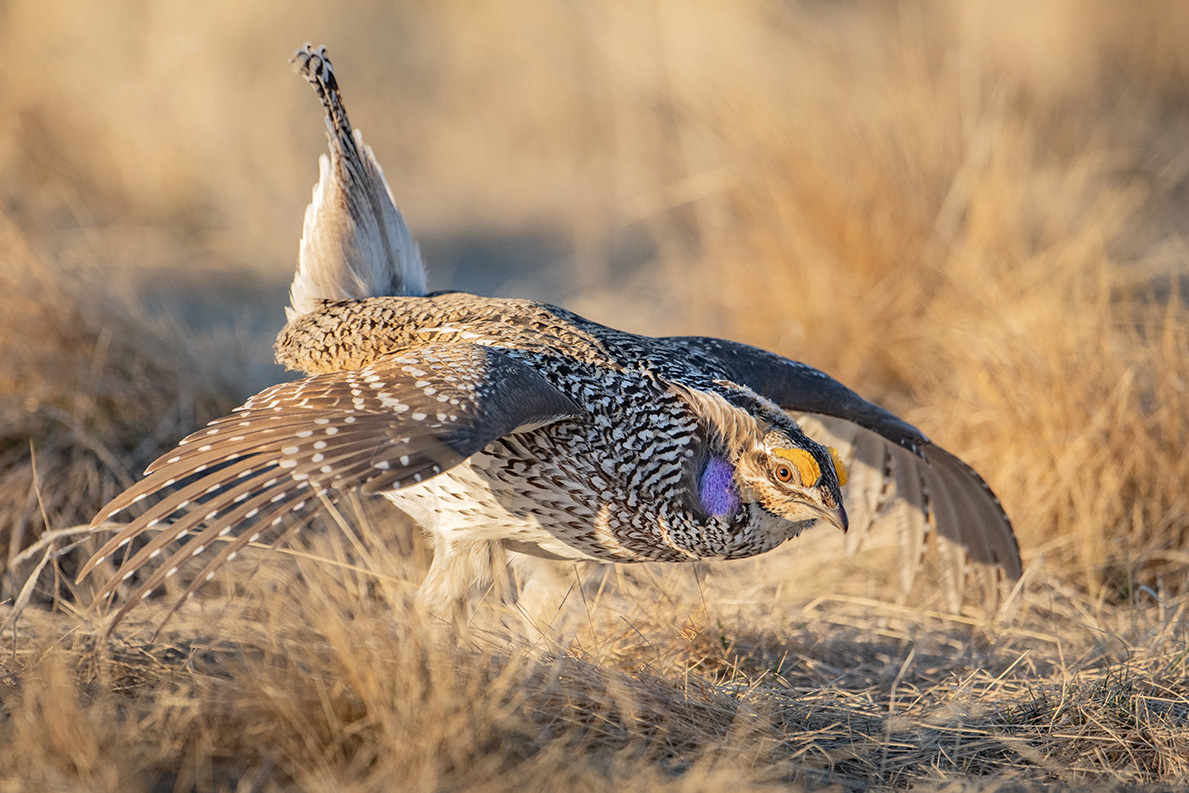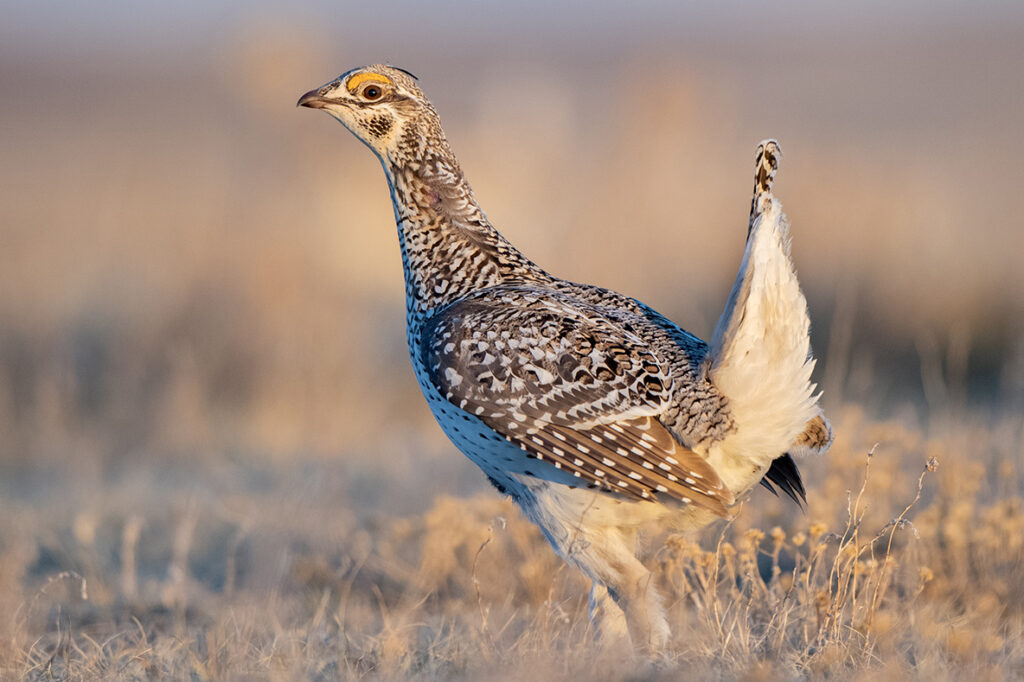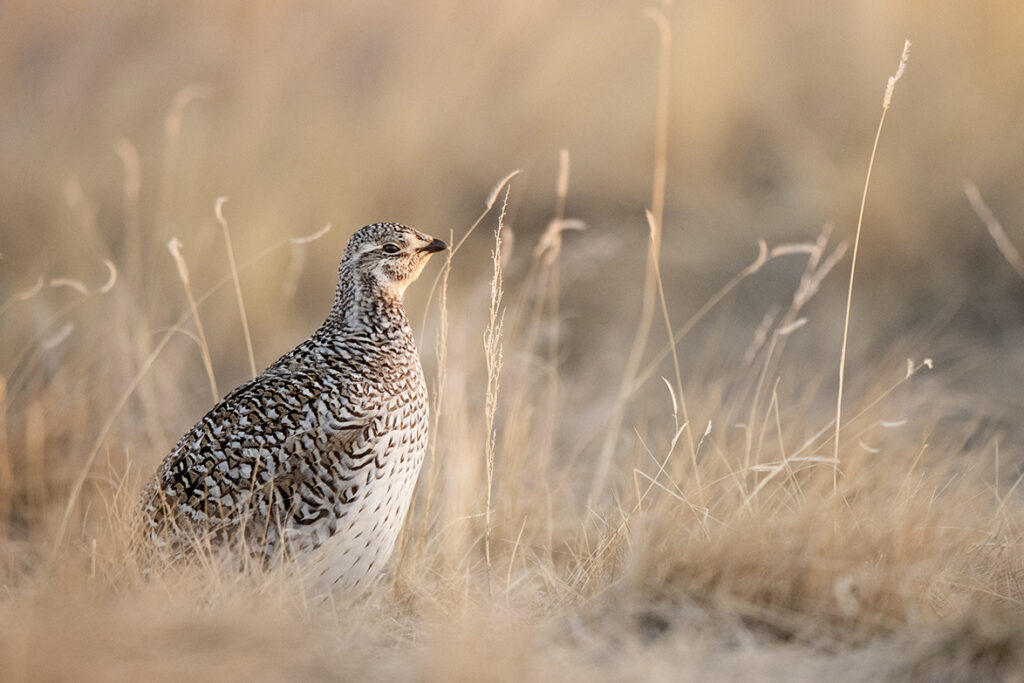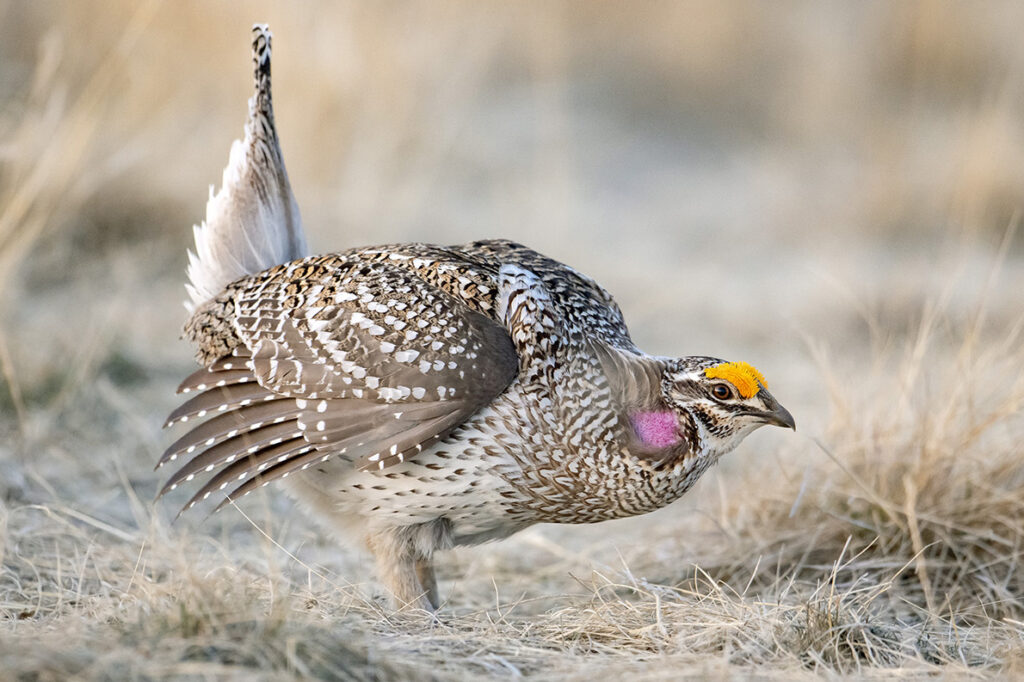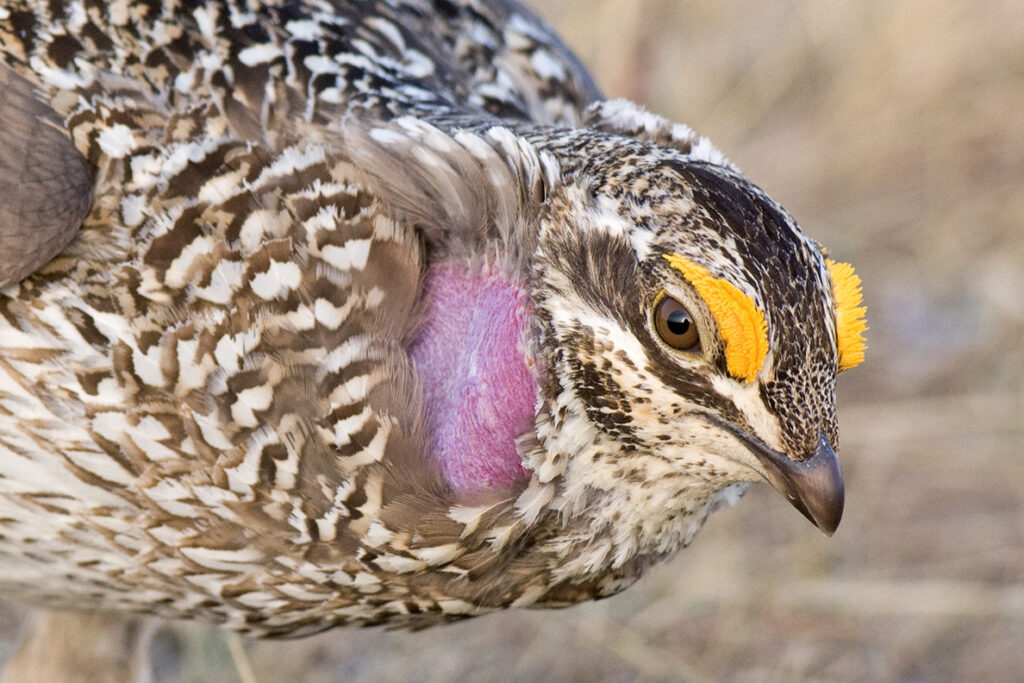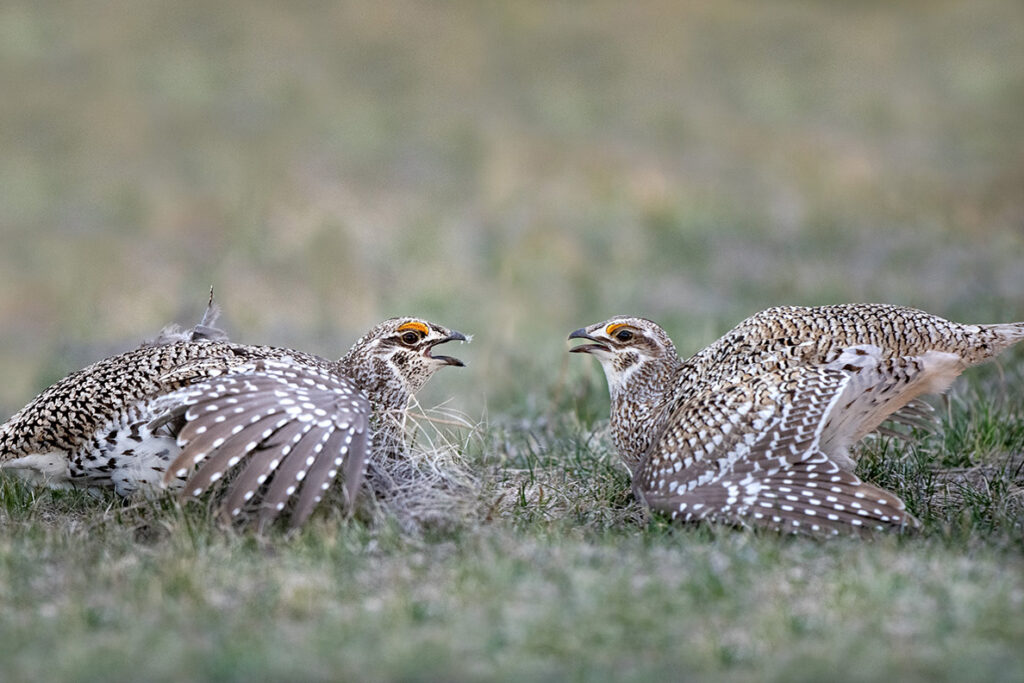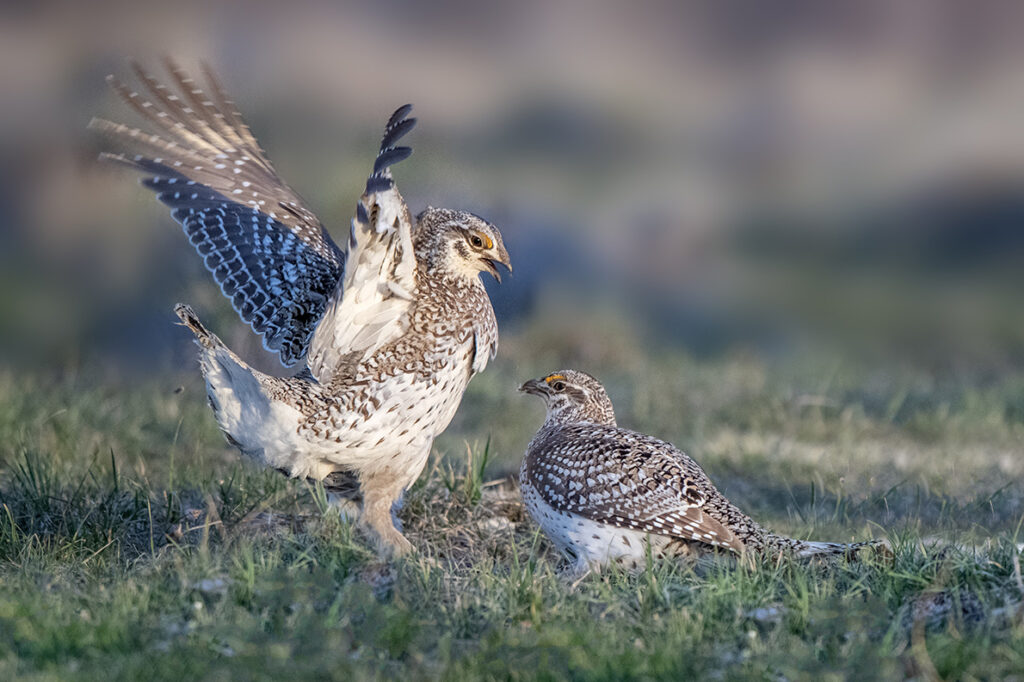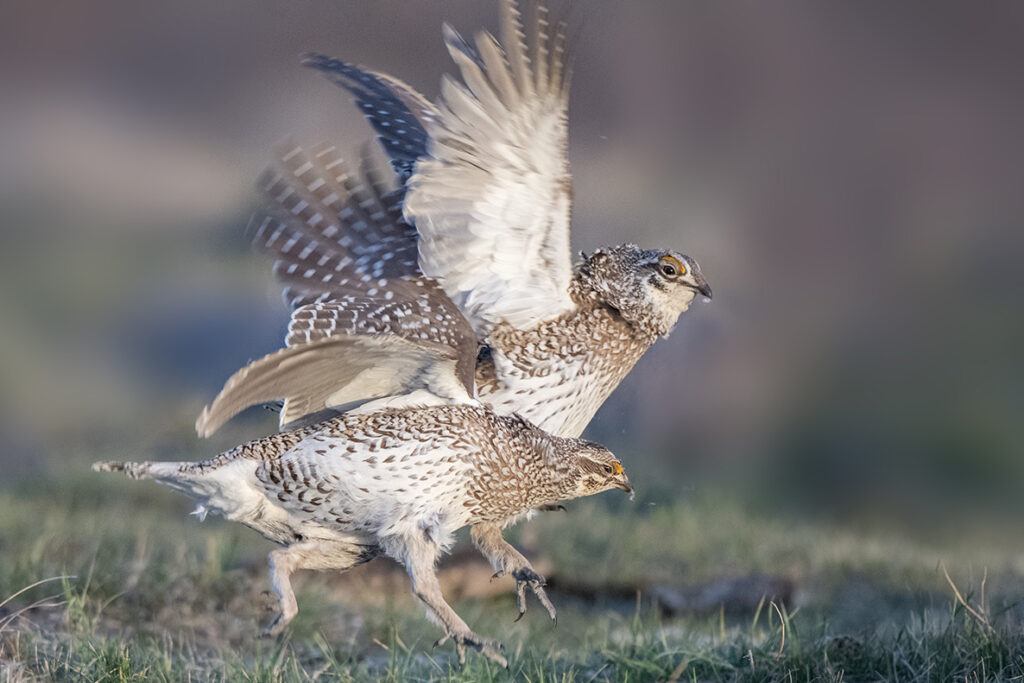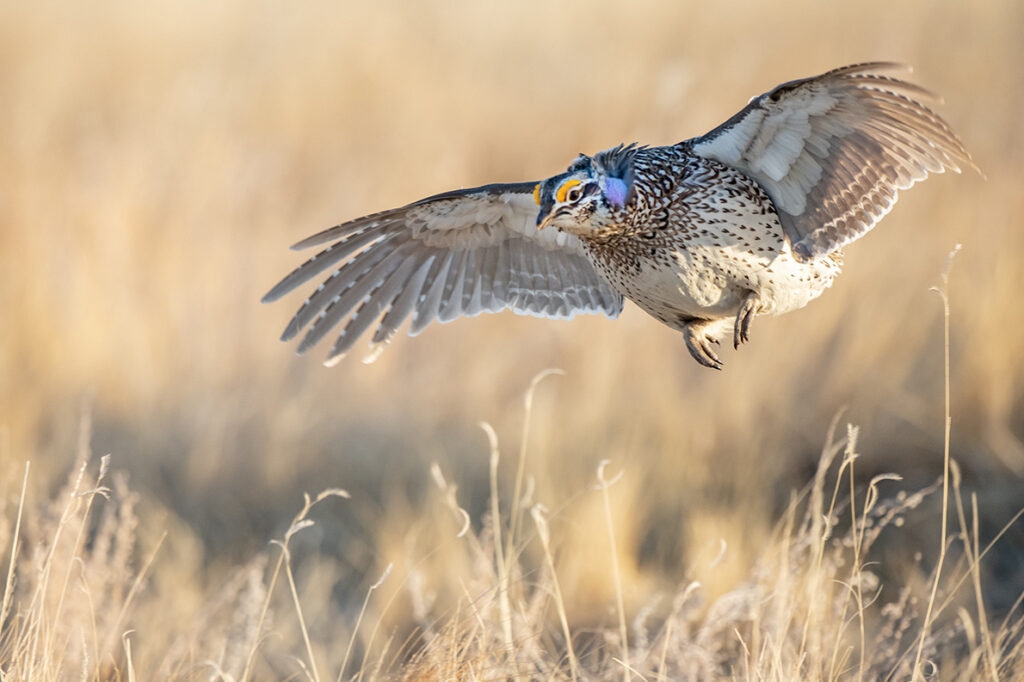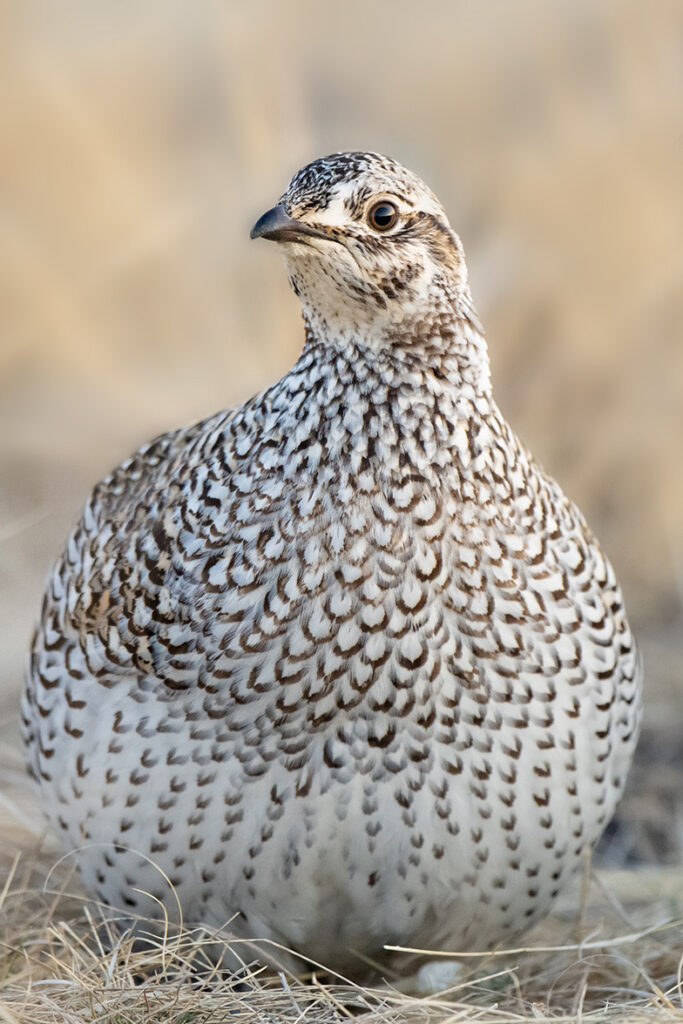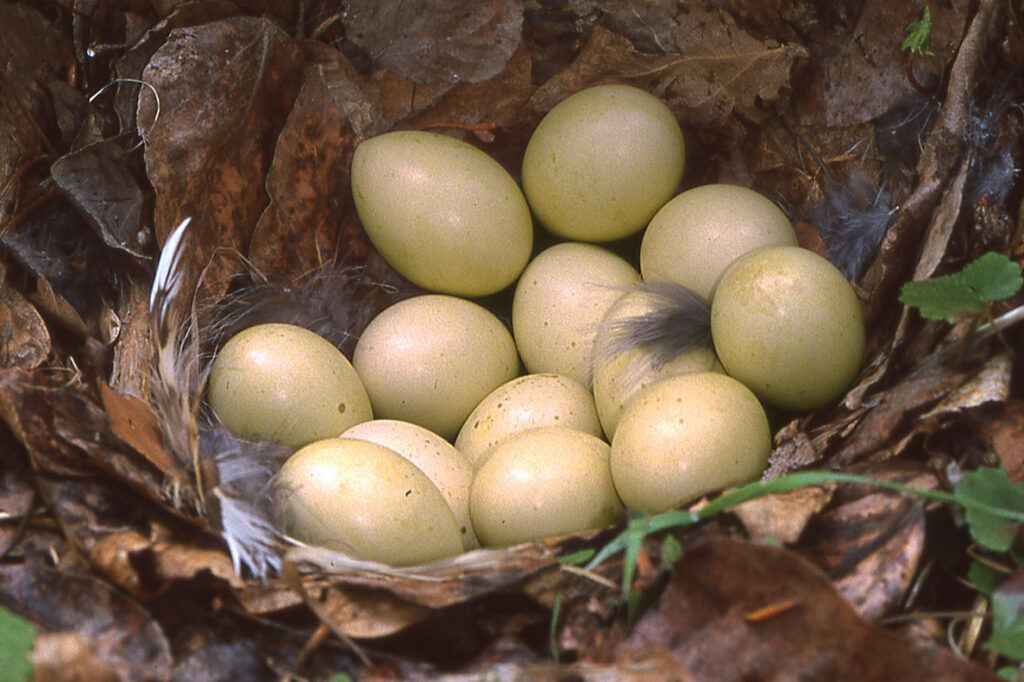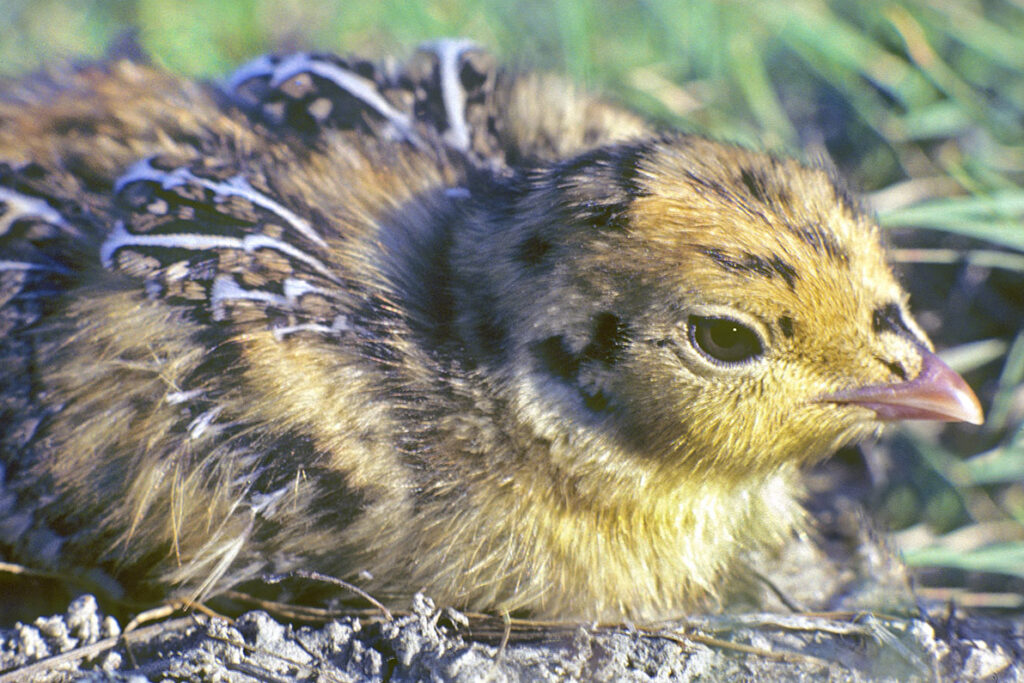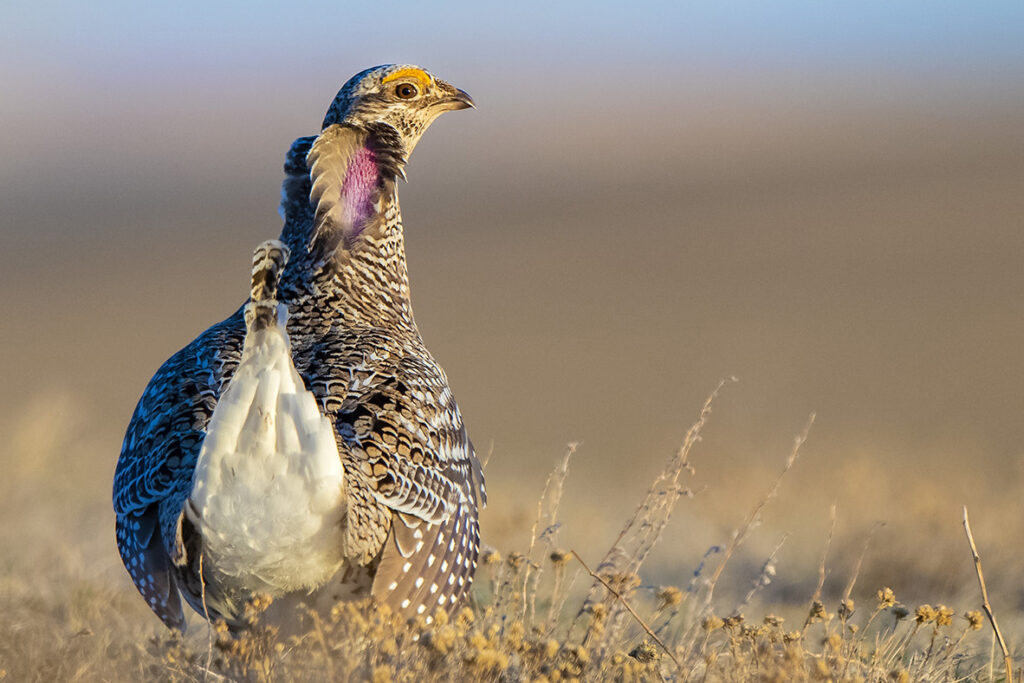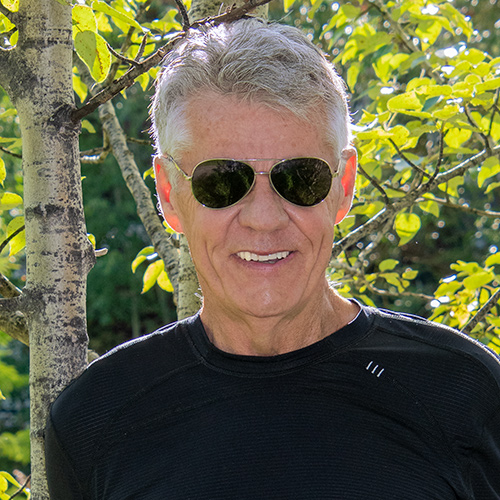This montage features the feathered finery of six adult male grouse. (clockwise from upper left) Greater sage grouse, spruce grouse, ruffed grouse, dusky grouse, rock ptarmigan, and white-tailed ptarmigan.
Canada is home to 9 of the 12 species of grouse that live in North America. These include three species of ptarmigan, the rock, willow and white-tailed, all of which live in the treeless tundra of the Arctic or the alpine regions of the western mountains. Two others are the greater sage-grouse and the sharp-tailed grouse, which live mainly in the prairies. The remaining four dwell in woodlands. They are the spruce grouse, which inhabits the northern boreal forests from Newfoundland to British Columbia, the dusky grouse in the Rocky Mountains of the Yukon and Alberta, the sooty grouse in the coastal mountains of British Columbia, and the ubiquitous ruffed grouse which populates aspen woodlands across the entire breadth of the country. There is at least one species of grouse in every Canadian province and territory with British Columbia having the most with seven species.
Grouse are one of my favourite group of birds, and every spring I try to witness the courtship of at least one of the family. This past spring, I spent some time working with sharp-tailed grouse in southern Alberta. This is the blind I used to capture most of the accompanying photographs.
In the prairies of southern Alberta, late March is an empty time. The landscape is leached of colour, and the bite of winter lingers as deer and pronghorn move slowly; rationing their strength. But, out on a grassy knoll, life refuses to be restrained, and the sharp-tails dance. Each spring, sharp-tailed grouse assemble at sunrise on ancestral dancing grounds, called leks, to re-enact their courtship ritual.
The males coo, cluck and strut. With their heads down and their tails pointed to the sky, they rapidly stomp their feet, and little clouds of dust erupt around them.
The birds vibrate across the ground like windup toys; they run feverishly for a moment and then suddenly stop. Up to 40 males may gather on a dancing ground half the size of a football field. Each male defends his own small patch of prairie.
A strutting male may suddenly stop and look around as if assessing whether any prospective females were watching.
One by one, female grouse wander through the cluster of males looking for a mate and evaluating the dancers for qualities only they can detect.
The central areas of a dancing ground are occupied by the oldest, most dominant males, and for a sex-crazed male, the center of the lek is definitely the place to be. Over 80% of the hens will mate with the few males displaying in the center of the lek. In fact, in a given year, eight out of 10 males never lay a feather on a female. They strut and coo in vain and, like many incurable sports fans, they dream of next season.
Females not only assess the quality of a male’s dancing display but also the vibrancy of his yellow eye combs and purple throat sacs, the colours of which reflect his health, vitality and freedom from parasites.
After a dancing session, rival males will often face each other and coo, seemingly trying to intimidate their opponent.
Standoffs often lead to fighting.
Subordinate males often arrive late to the sunrise dancing sessions and because of their low status they are obliged to occupy territories on the periphery of the lek.
After a hen chooses a partner she mates just once and then leaves the lek.
Sharp-tails nest on the ground, and almost every nest I have found was hidden under a clump of rose bushes or snowberry. The hen lays up to 13 plain, buff-coloured eggs.
As in all grouse, the eggs hatch within hours of each other and the precocious chicks are led away from the nest by the female. The down-covered young are a mottled patchwork of gold, brown and black, and blend perfectly with the dried grasses of the prairie. The young become independent by two months of age.
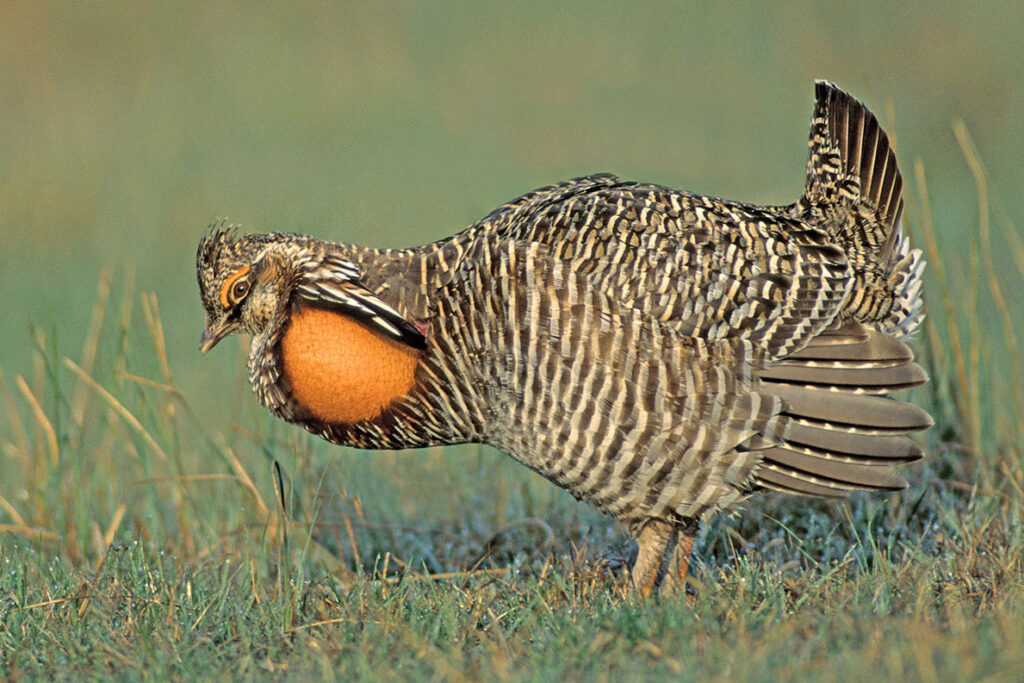 The greater prairie chicken is the closest relative of the sharp-tail. At one time it occurred in Canada’s southern prairies and Ontario but disappeared by the mid-1950s.
The greater prairie chicken is the closest relative of the sharp-tail. At one time it occurred in Canada’s southern prairies and Ontario but disappeared by the mid-1950s.
The sharp-tailed grouse has disappeared from much of its southern range in the United States but is still found throughout most of its historic range in Canada.
About the Author – Dr. Wayne Lynch
For more than 40 years, Dr. Wayne Lynch has been writing about and photographing the wildlands of the world from the stark beauty of the Arctic and Antarctic to the lush rainforests of the tropics. Today, he is one of Canada’s best-known and most widely published nature writers and wildlife photographers. His photo credits include hundreds of magazine covers, thousands of calendar shots, and tens of thousands of images published in over 80 countries. He is also the author/photographer of more than 45 books for children as well as over 20 highly acclaimed natural history books for adults including Windswept: A Passionate View of the Prairie Grasslands; Penguins of the World; Bears: Monarchs of the Northern Wilderness; A is for Arctic: Natural Wonders of a Polar World; Wild Birds Across the Prairies; Planet Arctic: Life at the Top of the World; The Great Northern Kingdom: Life in the Boreal Forest; Owls of the United States and Canada: A Complete Guide to their Biology and Behavior; Penguins: The World’s Coolest Birds; Galapagos: A Traveler’s Introduction; A Celebration of Prairie Birds; and Bears of the North: A Year Inside Their Worlds. In 2022, he released Wildlife of the Rockies for Kids, and Loons: Treasured Symbols of the North. His books have won multiple awards and have been described as “a magical combination of words and images.”
Dr. Lynch has observed and photographed wildlife in over 70 countries and is a Fellow of the internationally recognized Explorers Club, headquartered in New York City. A Fellow is someone who has actively participated in exploration or has substantially enlarged the scope of human knowledge through scientific achievements and published reports, books, and articles. In 1997, Dr. Lynch was elected as a Fellow to the Arctic Institute of North America in recognition of his contributions to the knowledge of polar and subpolar regions. And since 1996 his biography has been included in Canada’s Who’s Who.



